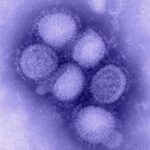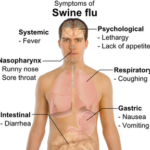Right now the flu is on most people’s mind, especially the swine flu or, as it is now known, the H1N!flu. Many people are evening beginning to compare the H1N1 flu to the past pandemic flu of 1918 known as the Spanish Flu. But what are the real facts about the Spanish flu?
So far the Spanish flu has been the deadliest flu outbreak or pandemic in history.
It took place from the years of 1918 and 1919.
This flu was spread worldwide.
Twenty-five to fifty million people died from the Spanish flu.
The flu took place during WW1. It was known as the Spanish flu because Spain was not involved in the war and there was no press censorship in this country.
Spain also had the worse early onset of the flu. By May of 1918, 8 million people in Spain alone were affected by this flu.
Health officials in Spain tried to calm people’s fear by stating that the outbreak was only the flu.
The Spanish flu vanished within 18 months, for no apparent reason.
The flu seems to be a strain of H1 virus type.
The flu was most deadly for those between the ages of 20 and 40 years old.
The flu first became known in the spring of 1918 and by that winter was running rampant.
During the worse part of the flu pandemic Health Ordinances were set in place such as:
Gauze masks had to be worn in public
Stores could not have sales
Funerals could not last longer than 15 minutes
Fines were issued to those who did not follow the health ordinances.
During the worse part of the pandemic there was a shortage of medical supplies, as well as coffins, gravediggers and morticians.
Some historians believe that the stress from the war weaken many soldier’s ability the fight the virus.
Twenty-eight percent of all Americans became affected by the flu.
675,000 Americans died from the flu.
Half of the US soldiers, who were stationed in Europe at this time, died from this flu, not from the war itself.
Even The US President at this time, Woodrow Wilson, suffered from the Spanish flu in 1919.
What can we learn from the Spanish flu to help us now during this possibly new pandemic?
Take the warnings seriously. Take the precautions. Wash your hands. If you are sick, stay at home.
If health ordinances are ever set in place, pay attention to them.
Realize the fact that the flu could be worse once fall approaches. For this reason, continue taking the extra precautions you are taking now during the first wave of this health crisis. It would also be beneficial if we all pay better attention to our health now while we are not sick. Eat better. Exercise. Take those vitamins.
If you can, donate to food banks. Those are less fortunate than we will have a harder time keeping healthy to protect themselves.
Listen to the news. But don’t obsess over it. This thing may last a while. Don’t scare yourself, when there may not be cause.
Remember medicine has come a long way since 1919.




